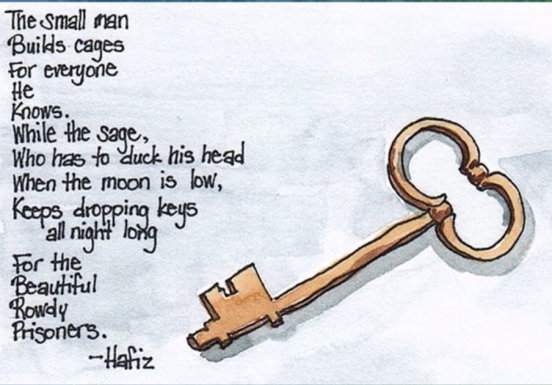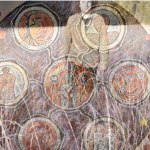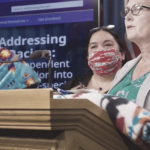This ‘spoken letter’ written response compelled me to take the time to reflect on, and honour, the personal stories of residential school survivors, and to learn about and acknowledge Canada’s dark colonial history. It was a very emotional experience for me to read and listen to the stories of the survivors of residential schools and the atrocities experienced by First Nations children, parents and communities. As I thought about how I might contribute to residential school survivors I considered what reconciliation means. I wanted to be part of the collaborative process, and, at the same time, honour the stories, words and truths of the survivors who shared their stories with us. I thought about how I was taught to share, give to others, and lend a helping hand. In my eyes, the way to connection with others, is through sharing; just like the way residential school survivors shared their stories with us. So, I decided that the message I wanted to send is that I hear the survivors; that I am listening, and I want to learn, share and give more. I hold their stories in my heart with kindness and love. I believe that reconciliation includes sharing and being open and the grade three Aboriginal students at Canyon Lister Elementary taught me that ‘sharing is caring.’ Based on this, I shared some of my own experiences. I shared about my 3rd year practicum with School District #8’s Aboriginal Education Program. I provided pictures of students participating in various Aboriginal cultural activities which enhanced the student’s sense of belonging, pride and identity. I felt honored to be able to help the Aboriginal students create (sew, bead and stitch) their regalia for the annual youth Pow Wow. It was heart warming to listen to their stories, to hear them being inquisitive about their culture/family and to see them so proudly wearing their creations as the stopped their feet at the Pow Wow to the beat of the drum. In my early school years, I didn’t learn about Aboriginal culture or history, and I was not taught about residential schools or Canada’s colonial past. I hope that sharing my experience in my social work practicum, and the growth I experienced, will be recognized as one of my personal steps towards reconciliation.
In addition to my references to my practicum, I also included a poem by Hafiz. This poem is very meaningful to me and guides my future social work practice. The poem expresses how I want to always empower and support the people I work with (by being a ‘key dropper’), and not oppress them or ‘build cages’ of conformity, as has been historically and currently done in our society.
I helped the Aboriginal students at my practicum by taking pictures of them holding hearts to thank the Elders from the Lower Kootenay Band for coming to the school and sharing their stories and teaching them aboutAboriginal culture and history. This inspired me to do the same, so, I ended my ‘spoken letter’ with a picture of myself holding a heart to thank all of the residential school survivors for sharing their stories, showing their resilience and for taking the time to listen to my ‘spoken letter’ that is addressed to all of them.
My hope is that this ‘spoken letter’ honors the survivors, and strongly conveys my commitment to standing with them in solidarity on the path toward reconciliation.
Desiree S





